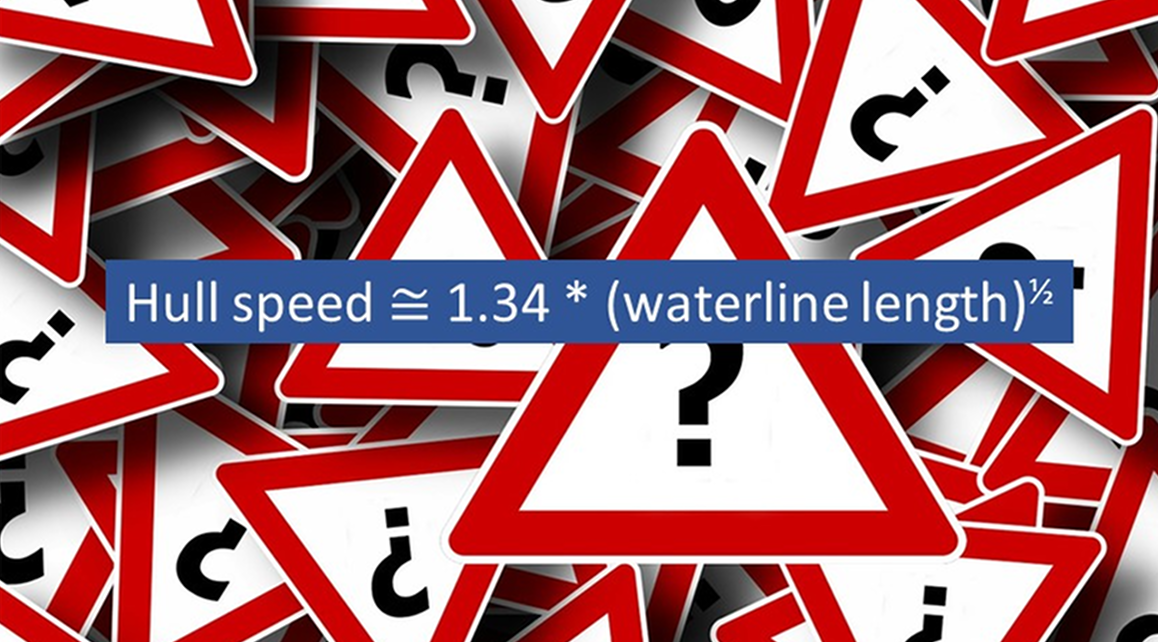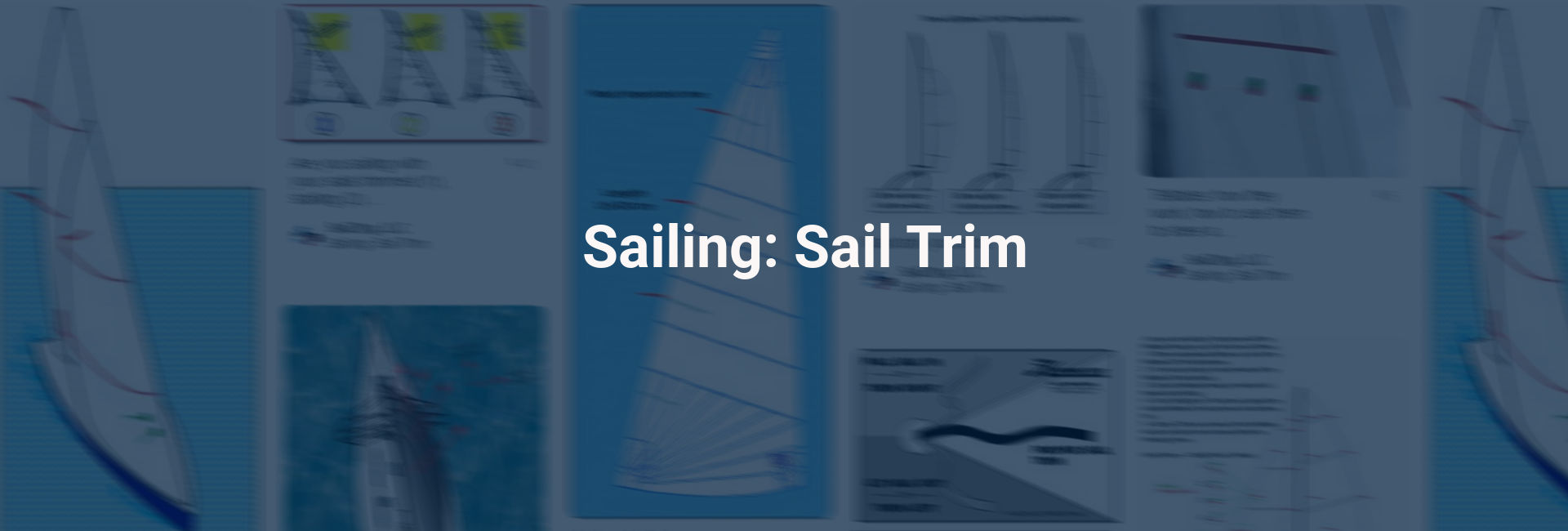In a Wednesday night pizza session, some of my sailing buddies had a “highly intellectual” conversation about this question: does hull speed matter for racing small sailboats? The conversation went something like this:
- Sailor 1: I was sailing upwind in flat water at roughly the hull speed. I knew I couldn’t go much faster, so I just pointed higher.
- Sailor 2: Huh? What’s hull speed?
- Sailor 1: It’s the fastest speed at which a boat sits level in its bow and stern waves. If you try to go faster, you need lots more power, just like a motorboat that is pitched up on its bow wave before it planes.
- Sailor 3: What??? My bow wave isn’t very big…
- Me: Don’t worry, eat your pizza. I’ll do some research and explain it on SailZing.
Definition of Hull Speed
You can think of hull speed in several ways:
- Very simply stated, it’s the fastest speed a boat will go before it creates a bow wave that requires the boat to sail “uphill” to go any faster.
- Stated a little more technically, it’s the speed that creates a bow wave equal to the length of the hull. Below is a simple video from Sailing Puffin showing this. (You only need to watch the first 1:51. He makes some incorrect statements later in the video.)
- Stated one more way, each boat creates a bow wave and a stern wave. When a boat reaches “hull speed” the bow and stern waves coincide to make one wave system. A heavy boat gets trapped in its own wave system.
What is My Boat’s Hull Speed?
Hull speed depends on the length of the boat and the hull shape. You can get an approximate number from the following formula or from the table from Rantilla Rowing:
Hull speed (knots) ≅ 1.34 * (square root of waterline length in feet)
So, for a sailboat with a 16′ waterline, the approximate hull speed is 1.34 * 4 = 5.4 knots, or 6.2 mph.
Limitations of Formula
The number 1.34 in the above formula does not account for hull shape. A technical article by a Stanford physics student out that values range from 1.18 for barges to 1.42 for very sleek vessels. Another reference mentions a coefficient as high as 1.5. Thus, a well-designed 16′ sailboat could have a hull speed perhaps as high as 1.5 * 4 = 6 knots, or 6.9 mph. I have seen recorded speeds in this range for MC Scows (16′) that were likely not planing.
Am I Limited to Hull Speed?
No, hull speed is only a practical limitation for full displacement hulls (think big tubs). Here’s why:
-
-
- If you are sailing a light boat with a well-designed semi-displacement hull, the bow wave will be small, and won’t take as much extra driving force to ride up on the bow wave, even if you can’t fully plane.
- Many light dinghies and scows will plane, given enough breeze. When you’re planing, hull speed doesn’t matter.
-
Does Hull Speed Matter for Small Boat Racing?
Hull speed can help you understand some key principles for sailing fast.
Sail your boat “on its lines” to maximize the waterline length and hull speed
Hull speed is the reason boat designers try to maximize waterline length. A longer boat is a faster boat.
-
-
- For centerboard boats, this means sailing flat, not only to get the most out of the centerboard, but also because flat gives the longest waterline.
- For scows, this means sailing at the prescribed angle of heel, which gives the longest waterline and maximizes the efficiency of the boards. To check this, watch your bow wave while sailing at various angles of heel. The bow wave is furthest forward at the proper angle of heel.
-
Hull Speed is More Important in Medium to Heavy Air
-
-
- In lighter winds, most boats will not reach hull speed, either upwind or down.
- In medium and heavy winds, boats can easily approach hull speed. Sailing the boat on its lines becomes more important as you approach hull speed.
- In heavy air, any opportunity to plane should be seized.
-
Related Content:
Why are longer boats faster? – another good brief explanation from Sailing Magazine
Ocean Waves – fascinating detailed discussion of waves and wave speed from HyperPhysics
Sailors Helping Sailors
Will you share your knowledge with your related Comments below?





